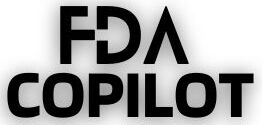In the world of medical device manufacturing, the primary goal is to deliver safe, effective, and pertinent solutions to healthcare problems. A recurring challenge, however, arises when a device meets its specified requirements but fails to address the actual needs of its intended users. This disconnect emphasizes the critical need for accurately defining user needs and translating them into appropriate, verifiable design inputs.
Understanding Design Inputs:
Regulations, like those found in 21 CFR 820.30(c), stipulate that design inputs must be suitably detailed to meet the intended use of the device, taking into account user and patient needs. These requirements mandate procedures that contend with incomplete, ambiguous, or conflicting input needs and insist on documentation approved by designated individuals.
Key Terms Explored:
- Appropriate: The design requirement should be relevant and useful for the specific device being developed.
- Intended Use vs. Indications for Use: While often confused, intended use pertains to the overall function and mechanism of the device, whereas indications for use focus on the conditions or symptoms the device addresses.
- Needs of User and Patient: This includes considerations for both trained professionals and regular consumers who might use the device, underscoring the importance of human factors and usability.
- Mechanism for Addressing Conflicts in Requirements: Processes should ideally identify and prevent issues with requirements before they arise, ensuring clarity and accuracy in design inputs.
Translating User Needs into Design Inputs:
The process begins with gathering clear and concise user needs, primarily from direct engagement with the end-users rather than internal assumptions. Understanding the real context and implications of user statements is crucial—what does a user mean by needing a device to be "portable," for example? This understanding must then be translated into specific, actionable design inputs that guide the engineering process.
Examples and Practical Application:
Consider the development of an advanced insulin pump; user engagement might reveal a need for integration with smartphones, compactness, and ease of use. Such user feedback must be deepened with questions about ensuring accurate insulin dosage under varying conditions, potentially leading to innovative solutions like AI integration or dual-chamber pumps for precise dosing.
Beyond Immediate User Feedback:
Manufacturers must look beyond the initial feedback to understand deeper needs and potential regulatory or market-driven requirements. This includes considering how the device fits into broader medical practices and patient lifestyles.
Challenges and Common Questions:
- Do all design inputs need a corresponding user need? While there should be a clear trace from user needs to design inputs, some inputs might stem from internal expertise or risk analysis aimed at enhancing device safety and effectiveness.
- Can design inputs include business considerations? Elements like cost, aesthetics, and market preferences can also be considered as design inputs if they affect the device’s usability and market success.
- Documenting Changes and Traceability: Any changes to design inputs or user needs must be robustly justified, documented, and assessed for broader impacts on the device and its use.
Integrating Systems and Software Support:
Utilizing platforms like Greenlight Guru can aid in maintaining traceability and managing documentation, ensuring that all aspects of design controls are visible, trackable, and integrated with risk management systems.
In conclusion, bridging the gap between user needs and design inputs is not merely a regulatory requirement but a fundamental aspect of developing medical devices that truly meet the needs of their users and succeed in the competitive market landscape. Manufacturers must engage deeply with users, explore and reevaluate needs continuously, and ensure that every aspect of the device design is aligned with these needs while also considering broader business and regulatory factors.
#Guide #Bridging #User #Design #Requirements



